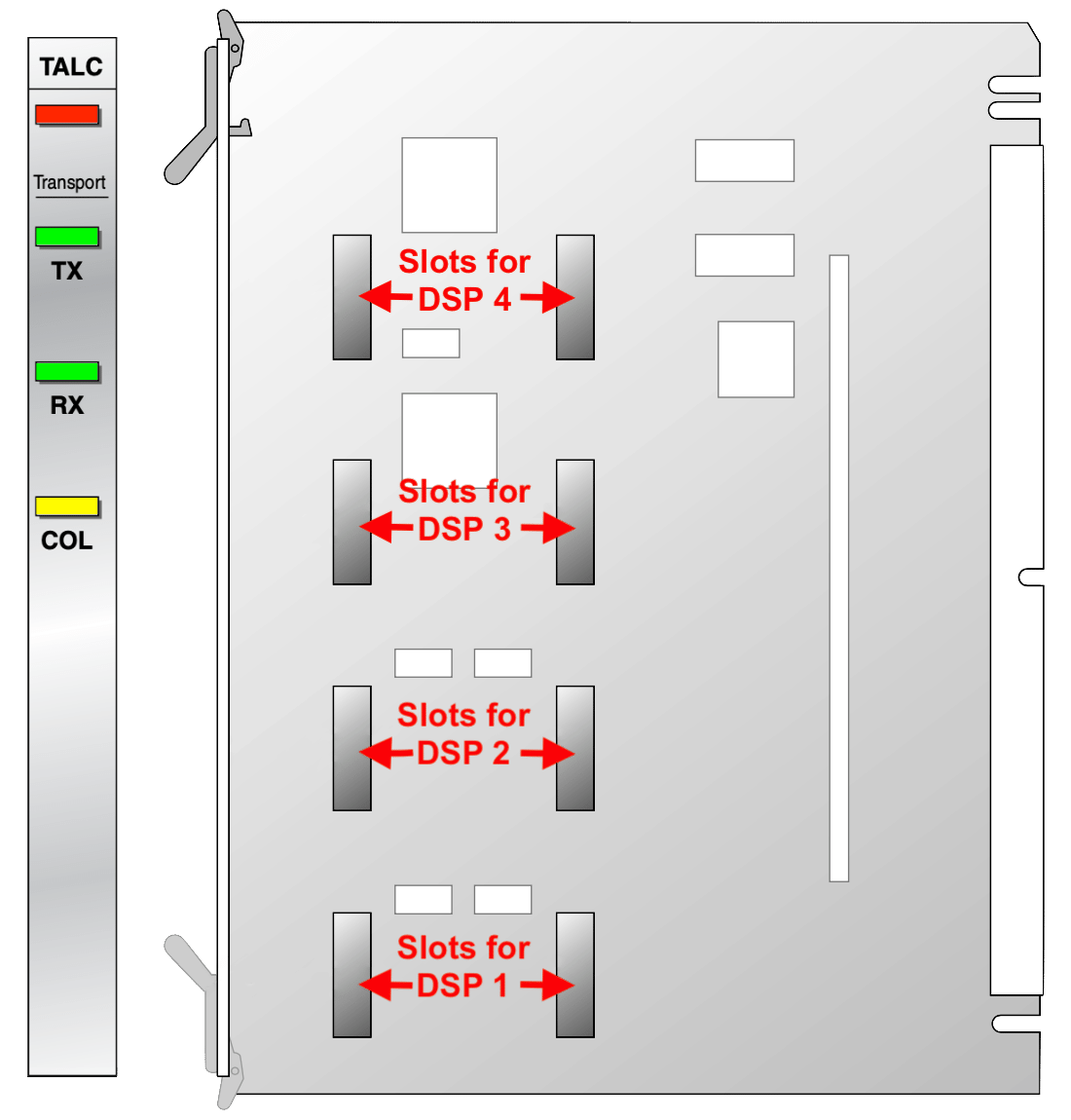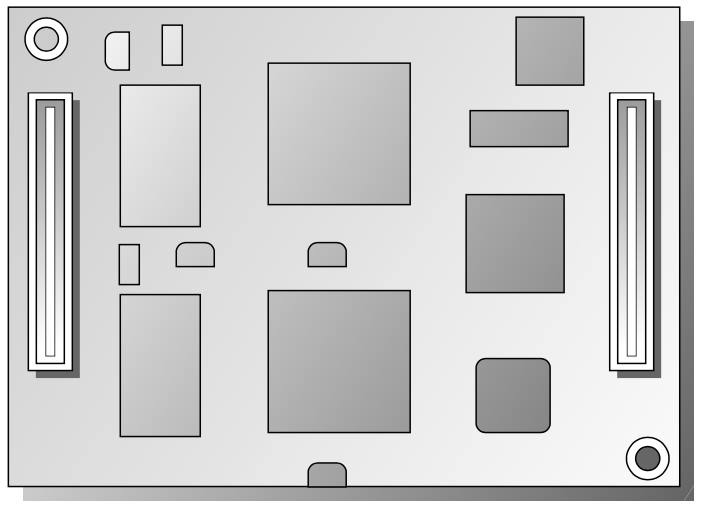TelStrat Application Line Card (TALC)
A Reach Line Card (RLC) / TelStrat Application Line Card (TALC) emulates a standard Extended Digital Line Card (XDLC) and provides service for digital telephones (2250, 3904 etc). Each port/TN is programmed in LD 11 (digital sets) or LD 12 (2250, see Port Programming for TN2). The host PBX interacts with a RLC/TALC as though it were a standard digital line card.
| Card | Ports | Width | Part # |
|---|---|---|---|
| RLC | 16 | Single | NTDR68 |
| 32 | Double | NTDR70, or NTDR71 | |
| TALC | 16 | Single | 740-01060-01 |
| 32 | Double | 740-01060-02, or 740-01060-03 |
Face-plate LED's:
- Maintenance: CS1K enable/disable status, flashes during firmware updates
- Ethernet Tx/Rx: indicates transmission or reception of Ethernet packets by the RLC
- Collision: indicates a collision in half-duplex mode, or solid when configured for 10/full-duplex
Note:
- The RLC defaults to a half-duplex 10BaseT Ethernet connection. Full-duplex 10BaseT can be set with Configuration Manager. When set for full-duplex, the RLC's Ethernet collision LED remains on solid (constantly lit). The corresponding data switch port must match the RLC port setting.
- The TALC supports half-duplex 10BaseT Ethernet connections only. All switch ports that the TALC card connects to on the Layer 2 switch must be hard coded for 10 BaseT Half Duplex and configured in a segregated VLAN to eliminate Broadcast traffic from reaching the cards.
DSP modules (NTDR73xx)
On-board digital signal processor (DSP) resources provide voice processing for up to eight simultaneous telephone calls. Each additional DSP module provides eight further channels of voice processing. There is provision for up to four DSP modules.
The Engage Record system can simultaneously record up to 16 conversations with one additional TelStrat DSP 8 module (740-01062-01) added to the TALC, or up to 32 conversations with three TelStrat DSP 8 modules added to a 32-channel TALC.
Installing TelStrat DSP 8 Module:
- Remove the TelStrat DSP 8 module from its antistatic bag, holding it by its edges, with the insertion tabs facing down.
- Insert the tabs into the DSP 1 of the expansion slots on the TALC. The tabs should snap into place when fully inserted. Visually inspect each tab to make sure that there is no gap between the module and the top of the expansion slot, thus ensuring that the module is fully inserted.

